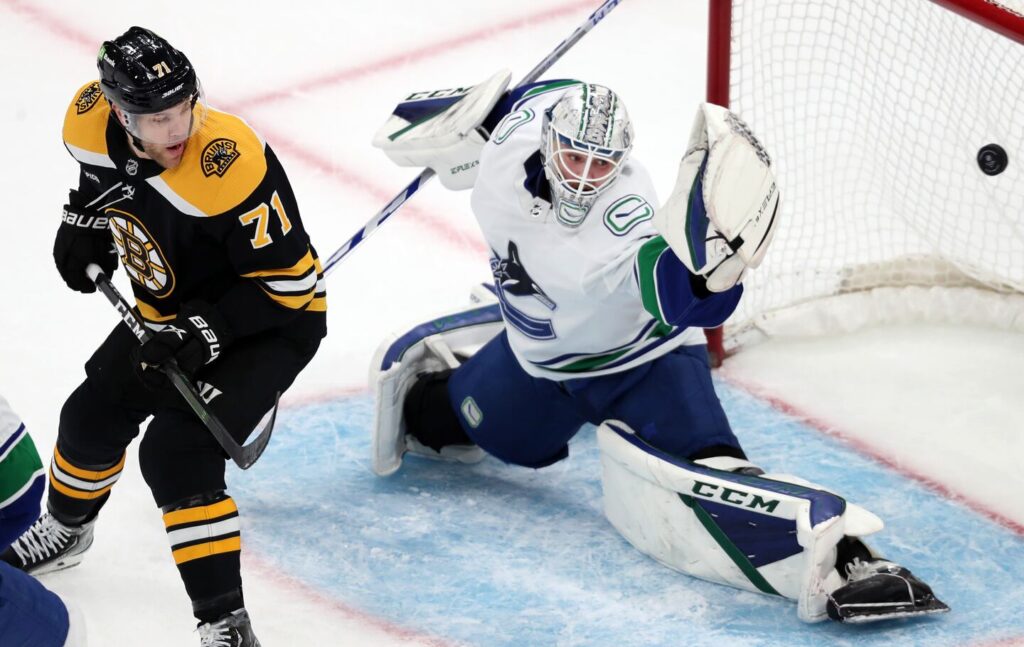
David Pastrňák has established himself as one of the NHL’s most lethal goal scorers. With a quick release, exceptional offensive instincts, and an eye for openings, he consistently ranks among the league’s top forwards. This article takes a closer look at Pastrňák’s scoring progression, tactical strengths, and chemistry with the Boston Bruins’ core, breaking down what makes him such a consistent threat on the ice.
Scoring Stats Over the Seasons
David Pastrňák’s scoring record has steadily improved over the course of his NHL career. From a promising young winger to one of the league’s elite snipers, his numbers tell the story of consistent growth and increasingly dominant performances. His goal totals have regularly placed him among the NHL’s top scorers, and his impact on the Boston Bruins’ offense has been enormous.
Most Productive Seasons
Several seasons stand out as milestones in Pastrňák’s offensive career. While he showed flashes of brilliance in his early years, it was his breakout in the mid-to-late 2010s that solidified his reputation.
| Season | Games | Goals | Assists | Points | League Rank (Goals) |
| 2016–17 | 75 | 34 | 36 | 70 | Top 20 |
| 2017–18 | 82 | 35 | 45 | 80 | Top 15 |
| 2018–19 | 66 | 38 | 43 | 81 | Top 10 |
| 2019–20 | 70 | 48 | 47 | 95 | T-1st (Rocket Richard) |
| 2022–23 | 82 | 61 | 52 | 113 | 2nd overall |
| 2023–24 | 82 | 47 | 63 | 110 | Top 5 |
Highlights:
- 2019–20: Shared the Maurice “Rocket” Richard Trophy with Alex Ovechkin (48 goals).
- 2022–23: Reached career-high 61 goals and 113 points, finishing 2nd in the league behind Connor McDavid.
These standout seasons not only boosted his individual legacy but also helped the Bruins remain perennial playoff contenders.
Goals per Game and Power Play Impact
Pastrňák’s goals-per-game average has steadily increased, particularly during the past five seasons. His career GPG (Goals Per Game) is approximately 0.52, placing him among the top active players.
| Season | GPG | Power Play Goals (PPG) |
| 2018–19 | 0.58 | 17 |
| 2019–20 | 0.69 | 20 |
| 2022–23 | 0.74 | 18 |
| 2023–24 | 0.57 | 16 |
Key Takeaways:
- He’s especially dangerous on the power play, often positioned at the right circle for one-timers.
- His one-touch release is a critical weapon in Boston’s 1–3–1 power play setup.
- Frequently draws defenders out of position, opening lanes for others even when he doesn’t score.
Pastrňák’s consistency in both even-strength and man-advantage scenarios makes him one of the most complete offensive players in the game today.
Playing Style and Offensive Tactics
David Pastrňák’s offensive brilliance lies not only in raw scoring numbers but in the way he creates scoring opportunities. His playing style is a fusion of instinct, technical precision, and strategic awareness. Whether leading a breakaway or operating in tight spaces, Pastrňák reads the game faster than most, allowing him to outmaneuver opponents and exploit defensive gaps.
Shot Selection and Creativity
One of Pastrňák’s greatest strengths is his shot variety. Unlike many goal scorers who rely on one type of finish, he constantly adapts—making him unpredictable and difficult to defend against.

Key traits:
- One-timers: Deadly from the right circle, especially on power plays.
- Wrist shots: Quick release, minimal wind-up, ideal in tight or transitional plays.
- Backhanders and deflections: Not afraid to mix in less conventional finishes.
- In-motion shooting: He rarely needs to stop to fire a shot, making his attempts harder to block.
Beyond the mechanics, his creativity is a standout trait. He often fakes passes or misleads defenders with subtle body language, creating space for himself and teammates. He’ll take sharp-angle shots, attempt bank plays off the boards, or fake a slapshot to freeze a goaltender before quickly changing his aim.
Movement Without the Puck
Elite offensive players know how to be dangerous even without the puck—and Pastrňák excels at this. His off-the-puck movement is deliberate and intelligent, constantly putting him in scoring positions.

What sets him apart:
- Finding soft ice: He knows how to drift into areas where defenders lose track of him.
- Synchronizing with linemates: Especially with Bergeron and Marchand, he times his cuts and curls to appear exactly where the puck will be delivered.
- Backdoor positioning: A master at sneaking behind coverage on the weak side.
- Stretching defenses: Uses his speed to push defenders deeper, opening the high slot for teammates.
His movement forces defenders to stay alert at all times—one lapse in coverage, and Pastrňák is ready to strike. This tactical understanding makes him not just a shooter, but a complete offensive threat.
Line Partnerships and Bruins Chemistry
Much of David Pastrňák’s success can be credited not only to his own talents but also to the remarkable chemistry he developed with long-time Boston Bruins stars Brad Marchand and Patrice Bergeron. Their line—often dubbed the “Perfection Line”—was one of the most dominant forward trios in the NHL during the late 2010s and early 2020s. Their complementary skills and mutual understanding made them a nightmare for opposing defenses.
Working with Marchand and Bergeron
The combination of Pastrňák’s finishing, Marchand’s grit and playmaking, and Bergeron’s two-way brilliance produced a perfectly balanced line. Each player brought unique elements:
- Bergeron: A defensive genius with elite faceoff skills and positional awareness. He served as the line’s stabilizer and distributor.
- Marchand: Aggressive, high-energy winger with strong puck control and vision.
- Pastrňák: The finisher—quick hands, elite shot, and ability to turn passes into goals instantly.

Together, they:
- Dominated puck possession metrics (Corsi and Fenwick consistently above 55%)
- Often matched against top lines and still controlled play
- Generated highlight-reel goals and consistent scoring at even strength and on the power play
Their off-ice friendship translated into seamless communication on the ice, with instinctive passing and spatial awareness that few lines could match.
Line Dynamics Over the Years
While the “Perfection Line” remained Boston’s top unit for several seasons, coaching strategies and team depth changes have occasionally led to shifts in line combinations.

Key developments:
- Post-Bergeron transition: After Bergeron’s retirement in 2023, Pastrňák started rotating more frequently between the first and second lines.
- Chemistry with Pavel Zacha: The Czech duo showed promising synergy, especially in the 2023–24 season, when Zacha stepped into a more prominent center role.
- Adaptability: Pastrňák has shown he can thrive with various linemates—whether playing alongside veterans like Krejčí or rising stars like Jake DeBrusk.
Despite lineup adjustments, his ability to adapt and elevate his partners has kept him productive year after year. Regardless of who centers his line, Pastrňák remains the driving offensive force.